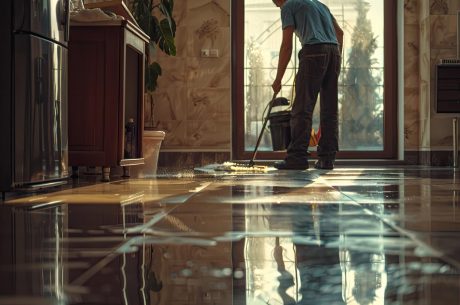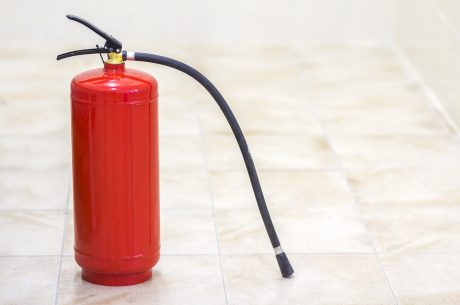Heavy rain can be a major cause of water damage in our Florida homes. When the storms roll in, it’s important to take steps to protect our property from potential damage. Being proactive can save us from costly repairs and the stress of dealing with water-damaged belongings.
Rainwater can seep into our homes through roofs, foundations, and basements. If we don’t take the right precautions, we might face serious issues like mold growth, structural damage, and ruined personal items. By focusing on key areas like our roofs, drainage systems, and basements, we can significantly reduce the risk of water damage from heavy rain.
In this article, we’ll discuss practical steps to inspect and maintain your roof, ensure proper drainage around your home, and protect your basement and crawl spaces. We’ll also cover immediate actions to take right after heavy rainfall to prevent further damage. Taking these measures will help keep our homes safe and dry, no matter how heavy the rain gets.
Inspect and Maintain Your Roof
Inspecting and maintaining your roof is a crucial step in preventing water damage after heavy rain. We should perform roof inspections both before and after storms to identify and fix any potential issues. A well-maintained roof can significantly reduce the risk of leaks and water infiltration.
Common roof problems that may arise include missing or broken shingles, clogged gutters, and faulty flashing. Missing or damaged shingles can expose the underlying roof materials to water, leading to leaks. We should regularly check for loose or broken shingles and replace them promptly. Clogged gutters can cause water to back up and seep into the roof. Cleaning gutters and downspouts ensures that water flows away from the roof and foundation. Faulty flashing, which is used to seal areas where the roof meets a wall or other surface, can also cause leaks. It’s important to inspect flashing for cracks or loose seals and repair any damage.
Ensure Proper Drainage Around Your Home
Proper drainage is essential to prevent water from pooling around your foundation, which can lead to water damage. Here are some steps we can take to maintain gutters and downspouts and improve drainage around our homes:
1. Clean Gutters Regularly: Remove leaves, twigs, and other debris from gutters to ensure water flows freely. Clogged gutters can cause water to overflow and damage the roof and walls.
2. Check Downspouts: Make sure downspouts direct water at least five feet away from the foundation. If necessary, you can use gutter extensions to keep water away from the house.
3. Inspect for Leaks: Look for any signs of leaks or rust in gutters and downspouts. Repair or replace damaged sections to maintain effective drainage.
In addition to maintaining gutters and downspouts, proper landscaping can help prevent water accumulation near the foundation. Grade the soil around your home so that it slopes away from the foundation. Adding a layer of mulch can also help absorb excess water. Installing French drains or trench drains can further improve drainage and protect your home from water damage.
Protect Basement and Crawl Spaces
Protecting basements and crawl spaces is vital to prevent water damage in these areas. These spaces are highly susceptible to moisture buildup, which can lead to mold, structural issues, and property damage. Taking appropriate measures to waterproof these areas can save us from these potential problems.
Start by sealing any cracks or openings in the walls and floors of the basement or crawl space. Use waterproof sealants to prevent water from seeping in. Installing a sump pump is another effective solution. A sump pump helps remove water that accumulates in the basement or crawl space, especially during heavy rains. Make sure the sump pump is regularly maintained and tested to ensure it functions properly when needed.
Using dehumidifiers in basements and crawl spaces can also help control moisture levels. Dehumidifiers reduce humidity and prevent mold growth. Ensure proper ventilation in these areas to keep the air dry and fresh. We can install vents or exhaust fans if needed to improve air circulation.
Immediate Actions to Take After Heavy Rain
After heavy rain, it’s crucial to check for water damage as soon as possible. Quick action can prevent further damage and reduce repair costs. Here are the steps we should take immediately after a storm:
1. Inspect the Exterior: Check the roof, gutters, downspouts, and foundation for any signs of damage. Look for loose shingles, clogged gutters, and water pooling around the foundation.
2. Check the Interior: Inspect ceilings, walls, and floors for any signs of water leaks or staining. Pay special attention to basements and crawl spaces for any water infiltration.
3. Remove Standing Water: If water has entered the home, remove it promptly using pumps, wet vacuums, or mops. Dry out damp areas to prevent mold growth.
Address any minor issues quickly to prevent them from becoming more serious problems. If you discover significant water damage or structural issues, it might be necessary to call professionals for a thorough assessment and repair.
Conclusion
Preventing water damage after heavy rain is essential for maintaining the safety and integrity of our homes. By inspecting and maintaining our roofs, ensuring proper drainage, and protecting basements and crawl spaces, we can significantly reduce the risk of water damage. Taking immediate action to address any signs of water damage after a storm can further protect our homes from costly repairs.
For expert assistance in water damage restoration, trust PuroClean of Naples. Our professional team is here to help you keep your home safe and dry. Contact PuroClean of Naples for reliable water damage restoration services today.




 PuroClean of Naples
PuroClean of Naples